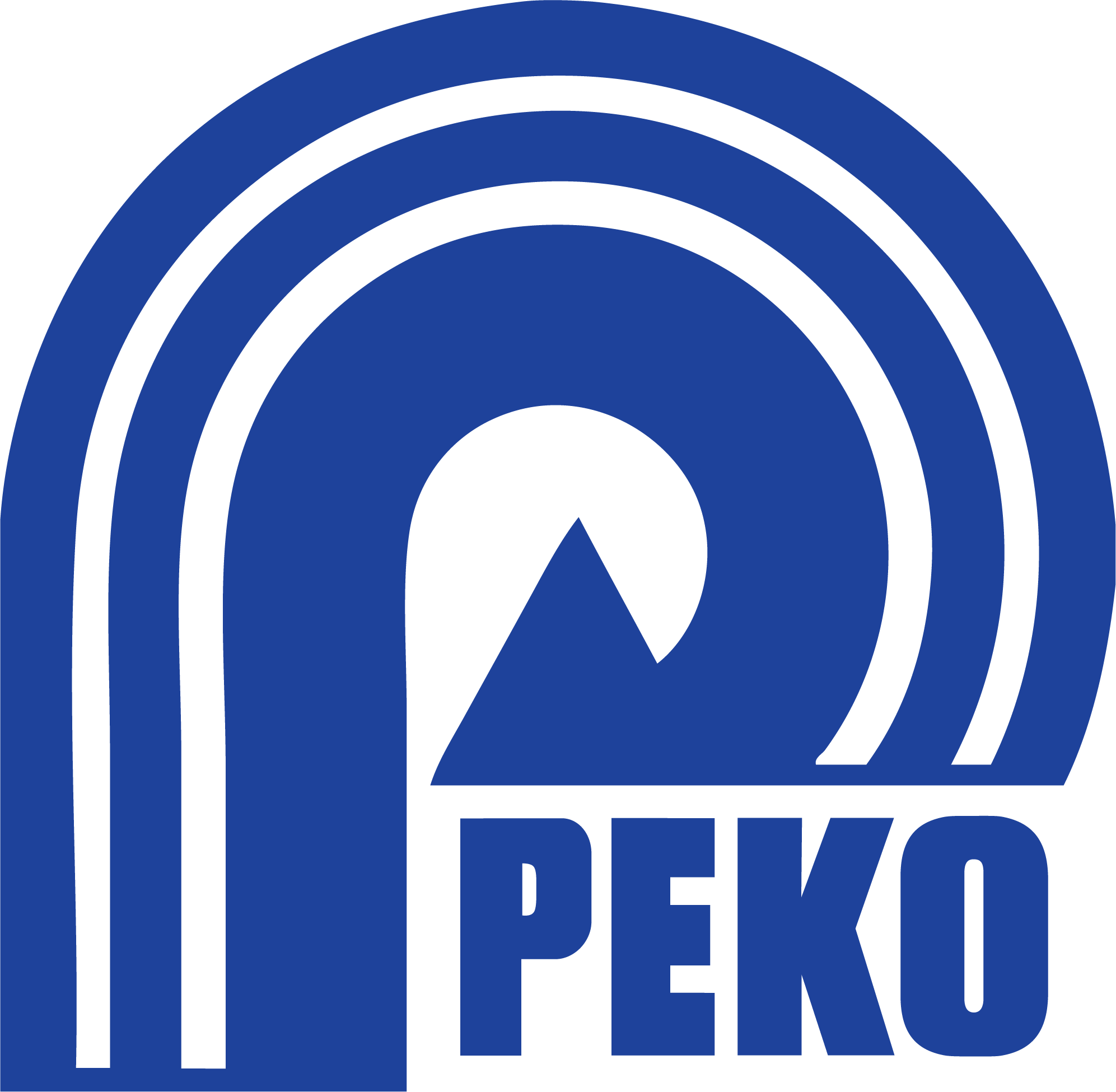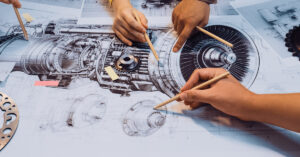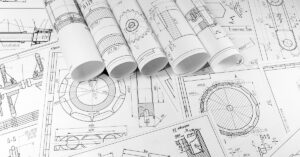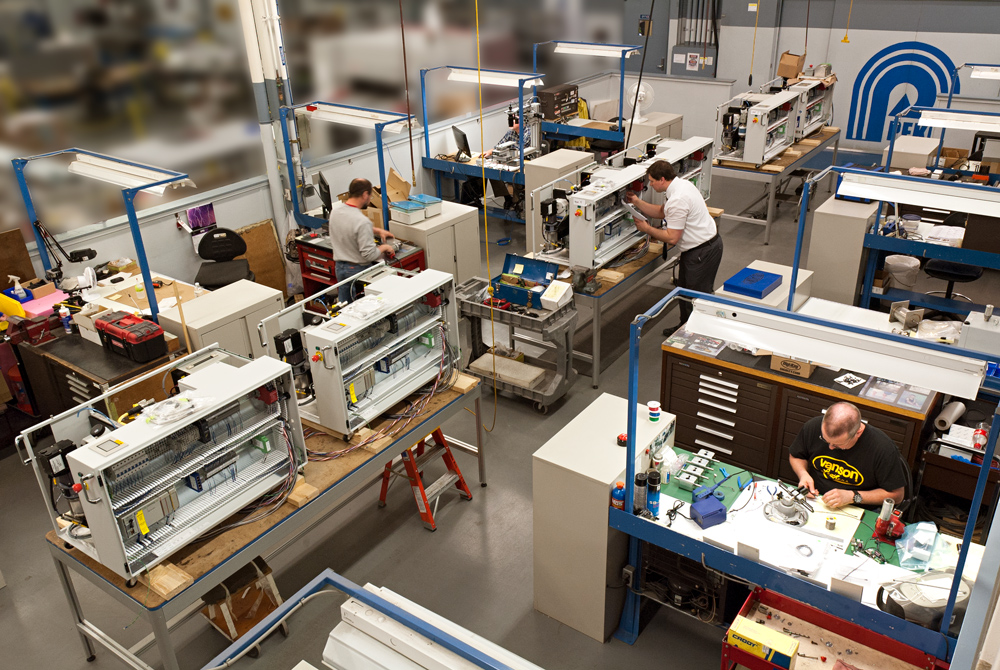
For OEMs producing complex machinery, deciding whether to outsource equipment manufacturing is often one of the most strategic choices they face. Balancing internal resources with production demands isn’t easy—capacity, compliance, and cost pressures can quickly stretch a team too thin.
Knowing when to outsource is less about guesswork and more about recognizing specific triggers. In the sections ahead, we’ll explore the most common signs that indicate it’s time to partner with a contract manufacturer and how doing so can position your business for long-term growth.
Why OEMs Outsource Equipment Manufacturing
For many OEMs, outsourcing is no longer just a way to cut costs—it’s a strategic move to stay competitive in demanding markets. Complex equipment often requires advanced capabilities that go beyond what most in-house teams can support at scale. By partnering with a contract manufacturer, OEMs can:
- Increase Flexibility: Adjust production levels without committing to permanent overhead costs.
- Access Specialized Expertise: Leverage welding, CNC machining, electromechanical assembly, and quality systems that are already in place with a partner.
- Accelerate Time-to-Market: Rely on established processes and capacity to reduce delays and deliver equipment faster.
- Ensure Compliance: Meet industry requirements such as ISO13485 for medical devices or AS9100 for aerospace without building those systems internally.
- Refocus Internal Teams: Free engineering and operations staff to prioritize innovation, integration, and customer value.
Outsourcing equipment manufacturing is ultimately about scale and stability. Rather than stretching internal resources, OEMs gain a predictable, repeatable process for building complex machinery while still maintaining oversight and control.
1 – Capacity Constraints Are Slowing Delivery
One of the clearest signs it’s time to outsource equipment manufacturing is when internal capacity can’t keep up with demand. Even the most well-run OEM shops eventually hit a wall: production floors run at maximum utilization, lead times stretch, and customer deliveries start slipping.
Capacity constraints typically lead to:
- Missed revenue opportunities because orders can’t be fulfilled on time
- Rising labor costs from overtime and shift extensions
- Inefficient prioritization, where urgent projects displace steady production work
- Higher risk of quality issues as teams rush to meet deadlines
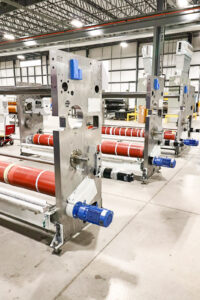 At this stage, outsourcing isn’t about replacing your team — it’s about extending it. The right manufacturing partner can absorb overflow work, provide flexible assembly capacity, and stabilize delivery without forcing permanent overhead.
At this stage, outsourcing isn’t about replacing your team — it’s about extending it. The right manufacturing partner can absorb overflow work, provide flexible assembly capacity, and stabilize delivery without forcing permanent overhead.
For example, when a multi-billion-dollar cardboard printing company partnered with PEKO, the decision to outsource modules and low-volume systems freed up more than 170,000 internal assembly hours. That capacity was redirected toward high-value final integration, allowing them to increase throughput and accelerate revenue recognition.
2 – Product Complexity Exceeds In-House Capabilities
As products evolve, so do the challenges of building them. When equipment designs incorporate more subsystems—mechanical frames, electrical harnesses, pneumatics, motion systems, software integrations—the demands on your internal team grow exponentially. What once felt like a straightforward build can quickly spiral into a resource drain.
For OEMs and SMBs, complexity often shows up in several ways:
- Integration challenges – coordinating mechanical, electrical, and software elements without introducing delays or errors.
- Specialized skills required – sourcing technicians and engineers with experience in electromechanical systems, advanced welding, or clean wiring standards.
- Extended lead times – as assemblies become more intricate, internal capacity can bottleneck around testing, debugging, and rework.
- Risk exposure – more subsystems mean more potential failure points, requiring disciplined processes and advanced quality systems.
Outsourcing equipment manufacturing at this stage provides access to an experienced partner that has already built the infrastructure to manage complexity. At PEKO, for example, programs are supported by a cross-functional team—mechanical and electrical engineers, program managers, quality staff, and assembly technicians—who ensure that every subsystem is designed, integrated, and tested to spec.
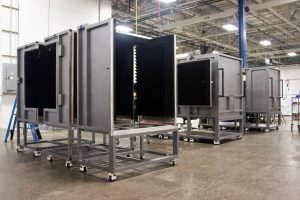
Real-world programs like MRI therapy systems, optical polishing platforms, and 5G communications equipment highlight how outsourcing helps OEMs move complex, multi-domain builds from prototypes into repeatable production. Instead of tying up internal resources, companies can redirect their focus toward product innovation and customer delivery.
3 – Costs Are Escalating Without Scale Efficiencies
Operating an internal shop comes with fixed overhead that stacks up fast: facilities, in-house machining cells that aren’t fully utilized, QA/inspection infrastructure (CMMs, calibration, documentation), and a procurement function juggling suppliers, expediting, and rework risk. When production ramps, those costs often rise faster than revenue—especially for complex equipment manufacturing.
Common cost pressures include:
- Overhead drag — space, machines, calibration, and tooling that sit under-loaded.
- Procurement inefficiencies — higher unit costs and expediting due to limited volume leverage.
- QA burden — maintaining metrology equipment, audits, and traceability systems internally.
- Labor creep — overtime, shift premiums, and management bandwidth.
At this point, choosing to outsource equipment builds unlocks economies of scale you can’t easily replicate in-house. A manufacturing partner consolidates purchasing across programs for volume pricing, runs standardized QA systems and inspection capacity you can tap on demand, and applies optimized sourcing (vendor consolidation, alternates/EOL planning, and consignment or hybrid models to reduce working capital). The result is more predictable cost per delivered unit and fewer spikes from expediting or rework.
4 – Early-Stage Builds Are Consuming Core Resources
 New product introduction (NPI) is critical for OEM growth, but it can put enormous strain on internal teams. Early-stage builds often demand constant engineering changes, close supplier coordination, and high levels of trial-and-error. When these projects compete with steady production, the result is a bottleneck: engineering hours get pulled into prototype debugging, production staff split time between pilot runs and revenue-driving builds, and overhead grows without scale.
New product introduction (NPI) is critical for OEM growth, but it can put enormous strain on internal teams. Early-stage builds often demand constant engineering changes, close supplier coordination, and high levels of trial-and-error. When these projects compete with steady production, the result is a bottleneck: engineering hours get pulled into prototype debugging, production staff split time between pilot runs and revenue-driving builds, and overhead grows without scale.
This is where outsourcing equipment manufacturing can create balance. A contract manufacturer with dedicated NPI capacity provides the space, talent, and processes to handle iterative builds without disrupting core production. At PEKO, for example, Phase 0 development support gives OEMs a structured way to refine specifications, validate manufacturability, and prepare for scale. By redirecting early-stage work to a partner, OEMs keep innovation moving forward while protecting delivery schedules and production output.
5 – Supply Chain Disruptions Are Risking Deliveries
For complex equipment manufacturing, even a single late component can ripple into missed ship dates and strained customer relationships.
Disruptions show up as:
- Parts shortages and EOL notifications
- Lead-time spikes and unreliable freight windows
- Allocation/MOQ changes that blow up planned buys
- Quality variability or delayed FAIs from niche suppliers
- Single-source dependency on critical items
- Sudden price swings that erode margin
One way to de-risk is to outsource equipment builds to a U.S.-based manufacturing partner with diversified sourcing and in-house capability. PEKO combines established supplier networks with internal machining, sheet metal, welding, and electromechanical assembly—reducing exposure to any one vendor and keeping builds moving when markets wobble.
PEKO’s supply chain team also monitors component obsolescence, proposes alternates, and maintains traceability—so substitutions are vetted before schedules slip.
Result: better continuity, fewer expedite fire drills, and a more resilient path from PO to shipment—even in volatile markets.
6 – Regulatory or Quality Demands Are Rising
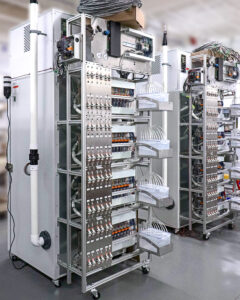
As programs mature, compliance expectations expand—ISO audits, device history records, PPAP/FAI, and traceable test data can overwhelm internal teams. When quality backlogs start to slow shipments or consume engineering time, it’s a strong indicator to outsource equipment builds to a partner with a proven QMS.
PEKO operates within certified systems (ISO 9001, AS9100, ISO 13485) and staffs dedicated quality engineers and technicians to manage incoming inspection, in-process checks, and FAT documentation for complex equipment manufacturing. This includes barcoded travelers, component traceability, and digital test records aligned to customer templates.
What OEMs gain:
- Audit-ready procedures and documentation controls
- Metrology capacity (CMMs) and formal control plans for repeatability
- Structured IQ/OQ/PQ or FAT workflows that protect release criteria
- Faster closure on NCRs/CAPA with dedicated quality ownership
Net effect: higher first-pass yield and reliable compliance without expanding permanent headcount.
7 – Strategic Focus Is Being Diluted
When OEM teams are stretched thin, the real cost isn’t just late deliveries or rising labor expenses—it’s the loss of strategic focus. Core engineering talent and operations managers should be driving innovation, refining products, and scaling revenue. Instead, many find themselves buried in tactical firefighting: expediting parts, managing vendor issues, or troubleshooting builds that fall outside their sweet spot.
This dilution of focus often shows up as:
- Key engineers spending more time on supply chain escalations than on new product development
- Operations leaders forced into daily build oversight rather than long-term capacity planning
- Executive teams bogged down by production challenges instead of growth strategy
Choosing to outsource equipment manufacturing re-centers the business. By shifting tactical assembly, procurement, and test execution to a full-service manufacturing partner like PEKO, OEMs free up bandwidth for their teams to prioritize market expansion, product roadmap execution, and customer engagement. The result is sharper alignment with strategic goals—and measurable acceleration toward them.
Choosing the Right Partner to Outsource Equipment Manufacturing
Deciding to outsource equipment is only half the equation—the other half is selecting the right partner. Not all contract manufacturers are equipped to handle complex, regulated builds at production scale, and choosing poorly can create more problems than it solves.
A reliable partner should check these boxes:
- Vertical integration – machining, sheet metal, welding, assembly, and test under one roof for tighter control.
- Certifications and compliance – ISO 9001, AS9100, ISO 13485, ITAR registration to ensure audit readiness.
- Proven capacity – ability to support everything from pilot runs to hundreds of units annually.
- Supply chain strength – established vendor networks, obsolescence monitoring, and traceability controls.
- Commitment to partnership – willingness to enter into long-term agreements that align with customer demand cycles.
PEKO brings all of these elements together as an experienced, vertically integrated manufacturer. With seven U.S.-based facilities across 380,000 sq. ft., more than 100 CNC machines, dedicated sheet metal fabrication operations, and a team of 40+ engineers, PEKO delivers the scale, compliance, and technical depth OEMs need to de-risk outsourcing while accelerating growth.
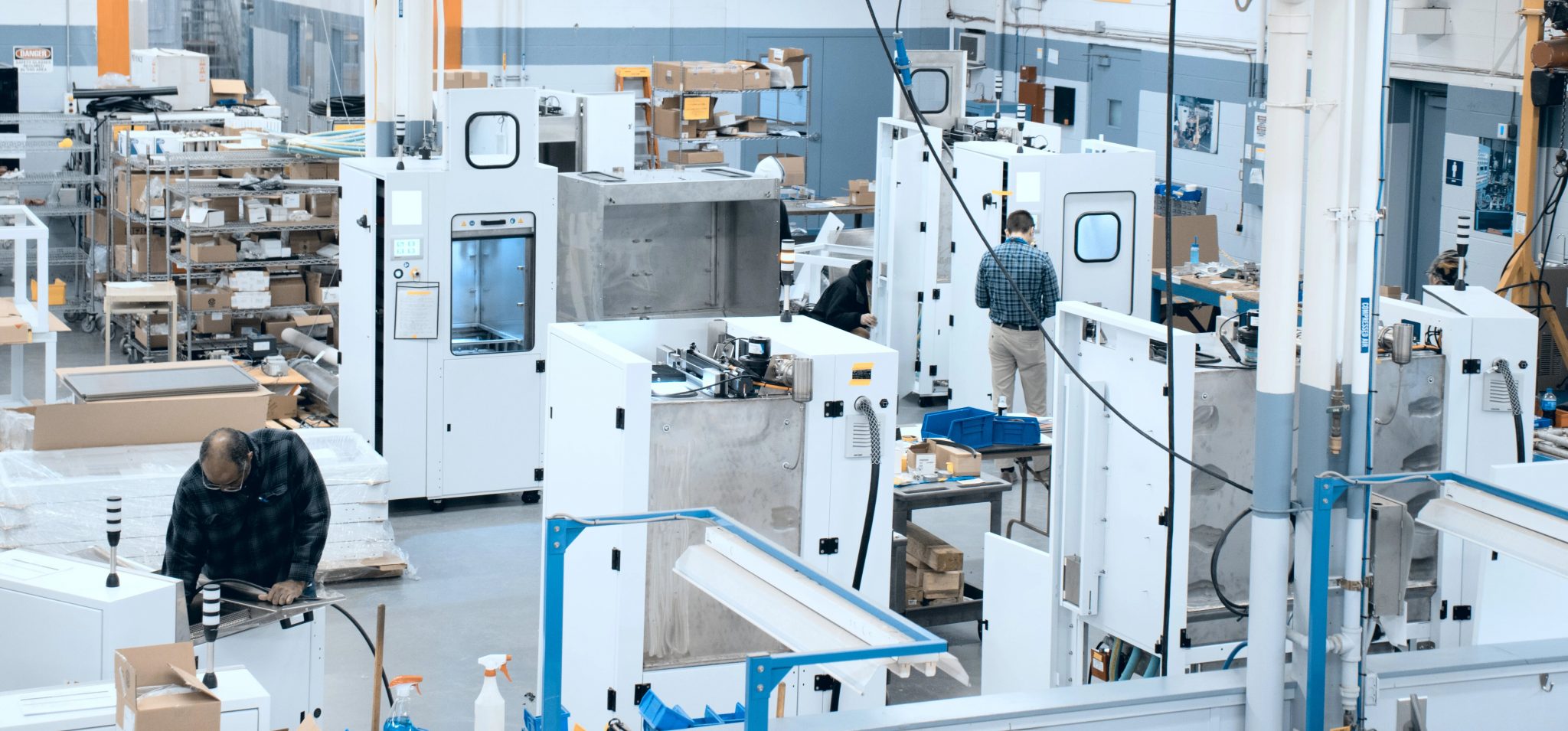
Final Thoughts: Scale Smart with Outsourcing
Compliance load, talent constraints, and long-lead volatility can stall otherwise solid programs. The fix isn’t more firefighting—it’s to outsource equipment where it creates leverage. A partner built for complex equipment manufacturing brings certified QMS, documented test, and resilient sourcing so releases stay on schedule and costs stay controlled. If these pressures sound familiar, it’s time to put a seasoned U.S.-based team on your side.
Contact PEKO to schedule a discovery call and confirm fit and next steps.
